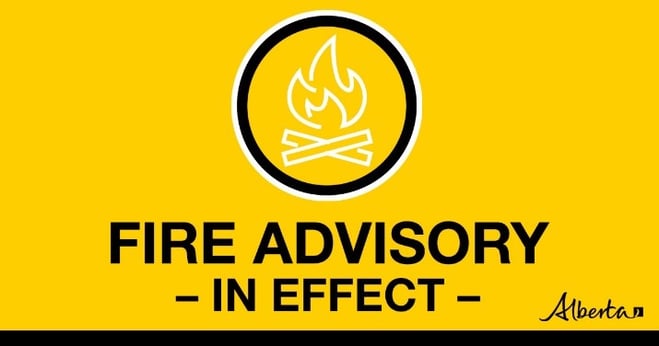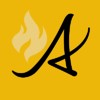
Please use caution when working or recreating outdoors and keep watch of your surroundings. Any spark, friction or hot exhaust could start a wildfire. If you see smoke or flame in the forest and suspect it's a wildfire, call 310-FIRE.
This update is best viewed on a web browser or the AB Wildfire Status App | To view previous High Level Forest Area Updates - Click here. Bold indicates new or important information.

A fire advisory is in effect for the High Level Forest Area.
- Existing fire permits remain valid, but extension requests may not be granted.
- New permits will be issued on a case-by-case basis, for essential burning only.
- Campfires are allowed in both designated campgrounds and random camping areas.
- Fireworks and exploding targets are prohibited.
If you see a wildfire, report it immediately by calling 310-FIRE.
To learn more about the Alberta Fire Ban System, check out our video or visit AlbertaFireBans.ca.

HTZ001 (Cameron Hills): Burnt vegetation.

HTZ001 (Cameron Hills): The Incident Managment Team that has been in place for nearly two weeks,
at their 5 pm meeting.
HIGH LEVEL FOREST AREA | WILDFIRE SITUATION | MAY 28, 2024
There are currently 10 fires burning in the High Level Forest Area (HLFA). Of those wildfires, nine are classified as under control and one is classified as being held. Six of these under control wildfires are carry-over fires from the 2023 season. Additionally, there are three fires along borders: two shared with B.C. and one with the N.W.T.
Since January 1, 2024, there have been 35 wildfires in the HLFA, burning a total of 536 hectares (ha).
HTZ001 (Cameron Hills wildfire) is a mutual aid wildfire that originated in the border zone with the Northwest Territories (N.W.T.) in 2023. It is currently located near Indian Cabins, just south of the N.W.T. border. Crews worked on it into the fall and winter and the fire carried over into 2024. On May 10, the fire crossed Highway 35, near Indian Cabins and the Hay River, and on May 23 it spread north, crossing the border back into the N.W.T. It is estimated that since May 10, 28,000 hectares have burned, and the fire is now considered out of control. Please note that this affected area (28,000 ha) is not included in the total number of hectares indicated in the HLFA, as it is a mutual-aid wildfire with shared jurisdiction with the N.W.T.
Highway 35 and surrounding roads may be impacted. We urge all motorists to check Alberta 511 before travelling in the area—allowing extra time in case of road closures. For up-to-date information on highway closures, visit Alberta 511 or download the app.
While some growth was observed yesterday, most of the containment lines held. However, aggressive fire behaviour could be observed on the northern portion in the N.W.T. Crews continued to work with heavy equipment and helicopters with helibuckets to build and reinforce containment lines, particularly on the southern perimeter on both sides of the Hay River as well as on the northern perimeter on the east side of the river. The priority remains mitigating the fire’s impact on values at risk, including Highway 35. 124 firefighters, 19 helicopters and 18 pieces of heavy equipment remain assigned to the incident. Among these resources are 2 helicopters with night vision capabilities. Beginning this evening, they will work throughout the night dropping water on hot spots, cooling down the areas where the crews will return in the morning. This will permit the crews to better attain their objectives on the ground.
All suppression efforts along the N.W.T. border are coordinated with the N.W.T. government. Please see https://www.gov.nt.ca/ecc/en/services/wildfire-update for more information on their activities.
Today, a high of 19 C is expected along with a low relative humidity of 25%, southwesterly winds at 15 km/h, but gusting to 30 km/h and less than one millimetre of rain. This return to clearer skies, drier weather and stronger wind speeds will cause an increase in volatile fire behaviour.
We ask that the public stay away from the area as firefighters and aircraft continue their work containing the spread of the wildfire. DO NOT use drones in the surrounding area of the wildfire. If you're in the sky, we can't fly.
HWF021 is classified as being held, estimated to be 378 ha in size and now a part of MCX001 wildfire complex with the Fort McMurray Forest Area. There are no threats to infrastructure or communities at this time. This wildfire is being actioned by firefighters and will be extinguished.
CLASSIFICATIONS | To learn more about wildfire classifications, click here.
LOCATIONS | To view this wildfire on our interactive map, click here and follow the active wildfire link.
CARRY OVER WILDFIRES | There are seven carry over wildfires from the 2023 wildfire season. These fires are classified as under control (UC). High-level infrared scanning is being conducted by aircraft to determine if there are any other active spots in the forest area. The wildfires remaining on the landscape are being monitored for fire activity, and resources are being deployed to extinguish hotspots as they are discovered.
SMOKE CONCERNS | Smoke may be visible in the High Level Forest Area. To see forecasted smoke, you can visit FireSmoke.ca. If you have smoke related health concerns, please contact Alberta 811.
.png?width=1200&height=676&name=wildfire%20app%20(2).png)
FIRE PERMITS REQUIRED
All burning within the Forest Protection Area of Alberta requires a burn permit, with the exception of campfire. At this time, the High Level Forest Area is not issuing any new burn permits and all existing permits have been suspended or cancelled.
High Level Forest Area | Permit Line - 780-926-5407. Stay informed of fire restrictions and fire bans in your area by checking Alberta Firebans.
More so than ever before, Canadians are feeling the direct and indirect impacts of wildfire. There is a growing need for FireSmart education. FireSmart Canada has developed a FREE one-hour course for those who are getting started with FireSmart and want to learn more. Follow the link by clicking here.
- Plan your high risk operations early in the morning when dew and humidity is higher in the dead grass and dry vegetation. Keep in mind that peak burning periods in our forest area are roughly between 1 p.m. and 7 p.m.
- Start from your headland (outer edge of the field) and work your way in. In the event a rock is struck and a spark is produced, the wildfire will be less likely to have vegetation to consume and easier to slow the spread.
- Ensure you clear all combustible materials away from points of ignition. Near heat shields, exhausts and wheel wells.
- Keep watch of your surroundings when working, you could accidently start a wildfire. Carry sufficient firefighting equipment and have a water source nearby.
To learn more on how you can protect your farm or acreage, you can also download the Farm and Acreage FireSmart magazine.
WILDFIRE INFORMATION
Download the Alberta Wildfire app today and get access to accurate, real-time information on wildfires in your area. You can also find information on fire advisories, restrictions and bans across the province and much more all on your mobile device. Available for Apple and Android.
Before heading out, please check albertafirebans.ca to determine whether there are any fire advisories, fire restrictions or fire bans in effect for your destination.
Subscribe to the High Level Forest Area Update to receive an email when new information is posted. Join the conversation on Facebook, Twitter or Instagram.
For more information, please contact:
Wildfire Information Officer
